It’s finally the end of June, and you’re finally able to relax your shoulders and unclench your jaw after having an entire year of online learning amid a global pandemic. You’re able to go outside and not feel guilty for taking time away from your computer and are finally seeing the light at the end of the proverbial tunnel that is remote schooling.
You’re finishing up exams, handing in assignments with what energy you have left from this term, and maybe even leisurely looking at job postings for positions in your field—namely those that look attainable with “entry level” or “junior” at the beginning of the title.
But you know you’re one of hundreds, even thousands of graduating students this summer—between university and college graduates—who will be looking for an entry level job in their field. So, how do you stand out and land an interview over your many competitors?
It’s been found that employers only spend an average of about 7 seconds looking at a candidate’s resume before moving on to the next one. Of course, this only makes sense in the context of a massive, and perhaps ever-growing pile of incoming resumes, but that just means you need to go above and beyond others to really catch their attention.
And the truth is, you don’t have to have an expensive premium package to a word processor or editing program to make your resume suit your style, personality, and capabilities. Online websites like Canva and Google docs provide free resume templates for you to fill in your information and download with no sign-up necessary.
Truthfully, a resume can be as simple as following a recipe: your name, contact information, introduction, then but in no particular order, your academic background, employment or volunteer experience, additional skills or certificates and licenses, maybe professional memberships or awards if they’re relevant.
And while there are certain pieces of information that should, generally speaking, always appear on your resume, there certainly is an art to writing a resume, depending on which field you’re applying to work in, what stage you’re at in your career, and what the position entails.
To make sure your resume covers all it needs to land you your first entry level job, check out some of our favorite tips and resume templates specific to your field below.
#1: Bullet points to show transferrable skills
My personal favorite kind of resume, though this is—believe it or not—a hot topic for debate when it comes to HR professionals, includes a summary of qualifications in its introduction. While this tends to be a more popular choice for those with more experience, this can also be a great option when it comes to displaying some of your transferrable skills that aren’t necessarily employment-based.
For example, if you’ve ever taken a MOOC or other online learning course in your spare time, or have experience from school-related extracurricular activities and have picked up skills that are important to the industry or position at hand, this is a great place to provide them, so you set a good tone for the reader right off the bat.
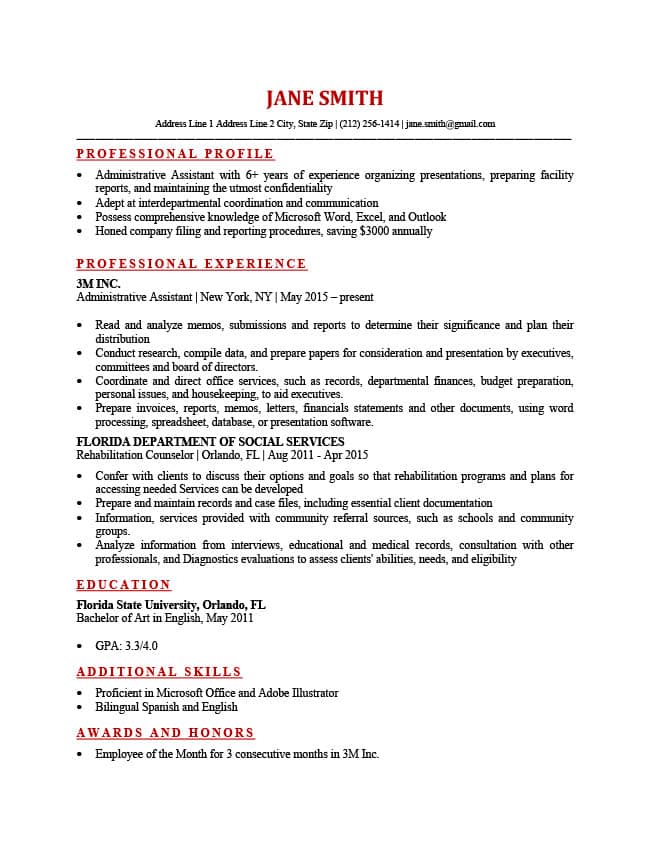
Example courtesy of Resume Genius.
#2: Advertise yourself
It goes without saying that certain resumes should be kept as strictly professional and straight to the point, like a position that calls for technical skills and specific training (see here an article on writing a technical entry job resume), others can and even should be tailored to be made as unique and creative as the job posting to showcase both your abilities and who you are.
For example, adding a photo to your resume with your contact information can make you stand out and seem approachable. As well, this can be good for making your resume memorable, especially in contexts where yours is among hundreds of others’–you’re just making it easier for the employer to literally put your name to your face.
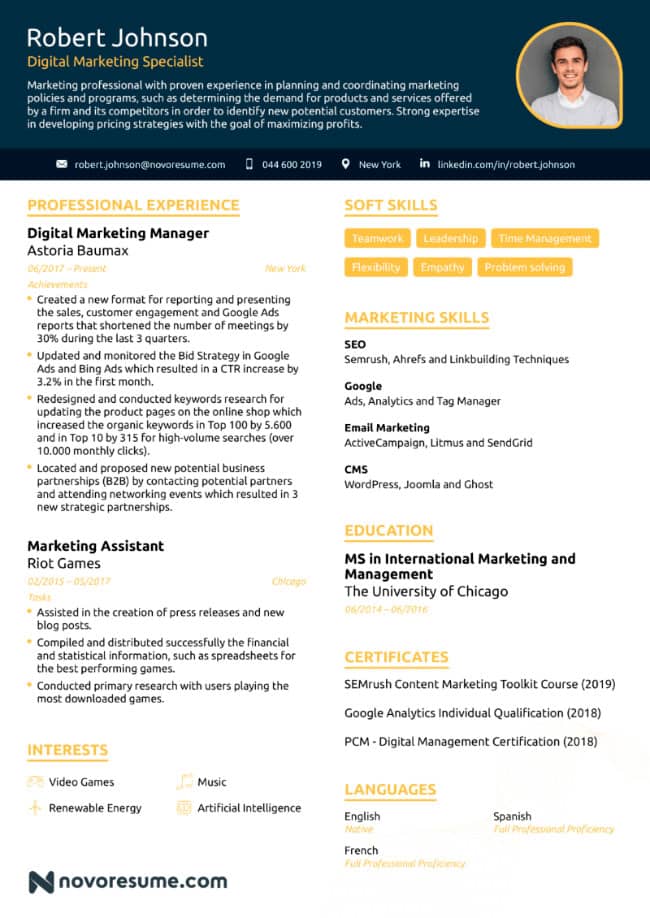
Example courtesy of novoresume.
Feel free to also add your signature style to your application, or perhaps a tagline. This can show your personality, your passions, and even your soft skills in design, copywriting, and marketing. And while this is great practice for those looking for a job in marketing or social media management, this can also be a practical for job applicants in other creative fields, like design, art direction, and communications.
#3: Stick to your strengths
One of my number one tips for job seekers is to never exaggerate qualifications or experience. It’s quite common for candidates to fib or stretch the truth a bit to make their applications fit the position more closely than perhaps the reality is, but this often indicates to the employer that you’re not confident in the abilities you already have, and sometimes even can make you come across as insincere or untrustworthy.
A better approach is to provide them with what you truly are great at and what you love doing. Of course, you’ll need to keep this as relevant to the position as possible but be honest and share how your passions have developed your skills and desire for learning and updating your knowledge in your field of work.
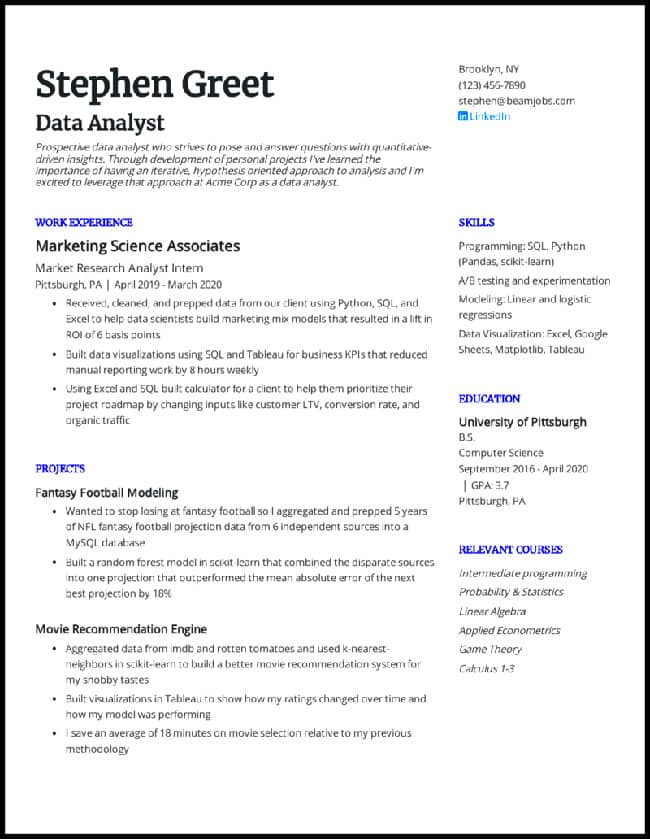
Example courtesy of Beam Jobs.
Showcase the skills you have, both soft and hard, that are necessary for the position and showcase how far you’ve gone to invest yourself in your career so your employer knows you’re committed and passionate about your line of work.
You can do so by highlighting aspects of your resume that really target what you’re all about and relating each aspect of your resume back to your focus in your career.
#4: Relate your resume to the job posting
Something I learned from a former colleague of mine is that the particularly dedicated and clever candidates tailor their resumes to each job posting by using the fonts and colors the company they are applying for uses in their branding on their resume.
So, let’s say you’re applying for a job at Bell Canada. You could showcase your name in their font on a bright blue background and their logo on your resume. This shows that you’re invested in the company, and you took time and effort to apply for the available position.
On the same note, you can use your resume both as a means of telling your future employer what you have to offer them and showing them by allowing your resume to do the talking alongside your important details. This could be as simple as having a great choice of fonts or design aspects that show your work’s style (like this clean, sleek, sophisticated example here).
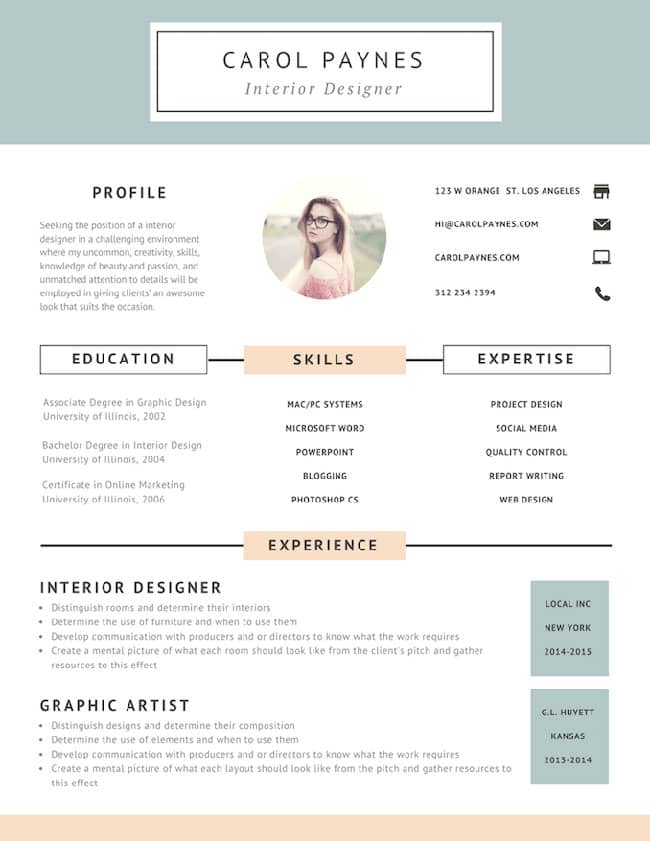
Example courtesy of 99 Designs.
Of course, this goes beyond aesthetics, as well, and should include specific keywords and phrases that the job poster uses in the posting itself.
#5: Be specific
When employers are scanning your resume for keywords, either manually or through software, they’ll be scanning for keywords that particularly crucial for their future candidate to have, and it’s almost guaranteed that this detail will be included on the job posting, so look carefully.
These can be as small as having experience using a project management website like Asana or Trello—but the more specific, the better.
The same goes for knowledge of programs like Photoshop and InDesign; using the programs by name individually also reads as more comprehensive as saying you have a general knowledge in all Adobe suite programs.
You can showcase specifics like this under where you learned this, (i.e., at an internship or during an academic program), in your bullet points that showcase your abilities that are specific to this job posting, or in a separate section that showcases these skills on their own under a category called “skills” or “technical skills”.
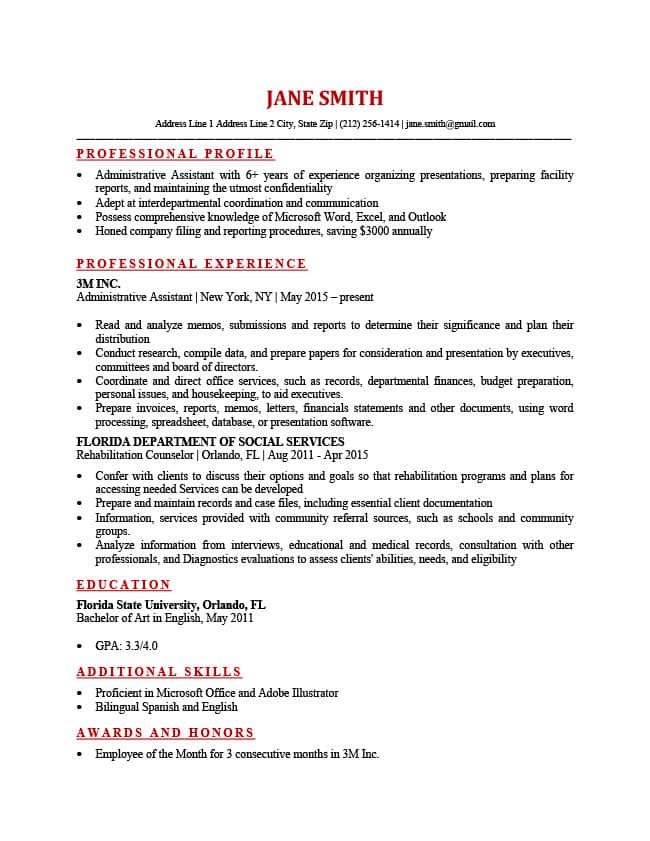
Example courtesy of Resume Genius.
Of course, with that said, it also goes without saying that yes, even though it’s a headache to do so, you should be tailoring your resumes to fit every position you apply for.
#6: Showcase your academics
Uma said it first: if you’ve got it, flaunt it. While the expectations are of course minimal for entry level jobs, there is still good reason to boost your resume as much as possible, if only because of the current lull in the job market and the newly graduated student season approaching.
So, if you don’t have tons of experience in employment already, showcase what you do already have by including and highlighting your academic history and all you’ve learned from your years of schooling that are key to your career.
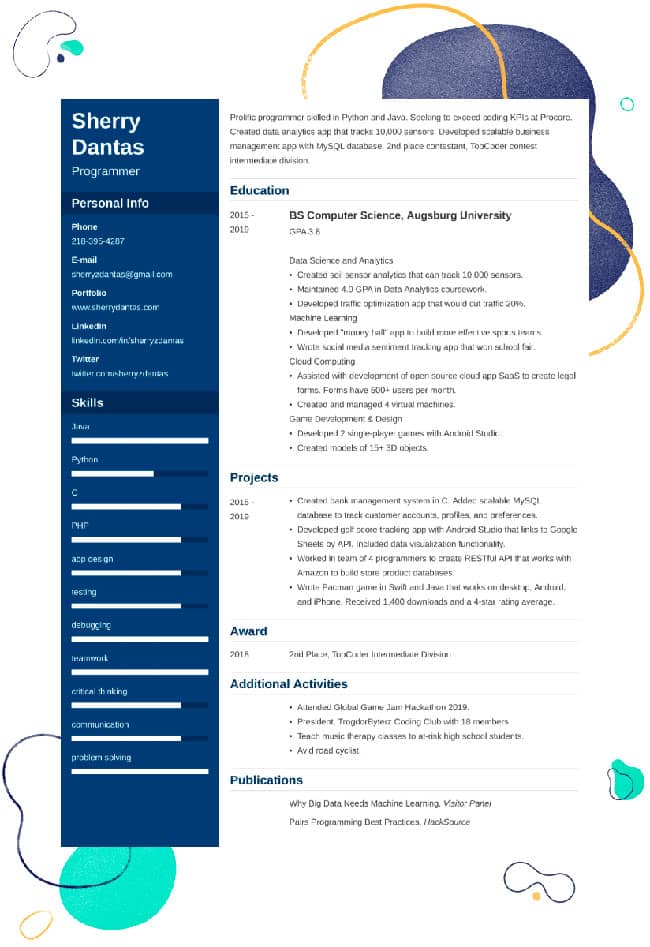
Example courtesy of Resume Lab.
To make your resume stand out even more, you can have your academic credentials verified before applying to your job, so your application is ‘pre-verified.’
Not only does this save your future employer money and time on performing background checks once they finally decide to hire you (which surely, they will!), it also demonstrates to them both your dedication to starting your career in your field, and your trustworthiness as a candidate.
These set a good tone for your first job, too, so having a good reference to use in the future, if you ever need one, would also be a great bonus.
You can have your university or college degree/diploma verified and authenticated for your entire career on the Workwolf platform; all you need is a free Workwolf account and any badge package that includes an academic verification, or the add-on itself, which can be bought individually, as well.
Along with paid credential verification packages and profile boosters, Workwolf also provides all users with a free career fit assessment called Packfinder, which showcases your strengths and natural pre-dispositions as a worker and can be particularly helpful if you’re feeling a bit lost post-graduation.
With that said, if you’re coming from either a college or university or even high school, your institution is sure to have resources like guidance or career counselors who specialize in assisting the development of your career, including in teaching you how to build a resume or write a cover letter, so ask your school if they offer this kind of service, especially for recent or soon-to-be graduates.
You can find remote vacancies for recent college graduates on Jooble.org.





